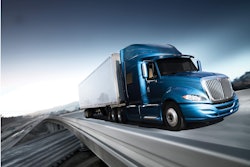
Todd Spencer, OOIDA’s executive vice president, objected. “The elephant in the room is the time spent loading and unloading,” he said. “It’s never captured, it’s never accounted for.”
FMCSA has occasionally acknowledged the problem. Administrator Anne Ferro has used “the bully pulpit,” as she said as recently as June, to influence shippers’ awareness of the need to account for excessive delays at docks.
At the April FMCSA listening session on the subject of EOBRs and harassment, Landstar-leased owner-operator George Sherveny echoed many when he urged FMCSA to go beyond “research” into the problem. “I believe it is important for FMCSA to formulate regulations that prevent this kind of harassment.”

This should be a standard part of a rate contract. If you’re dealing with brokers or considering a lease to a carrier, discover the detention compensation practices. Detention pay is commonly charged to shippers and offered to drivers on an hourly basis after a certain time limit, often an hour or two.
Expedited owner-operator Don Lanier has good incentive to use his phone to time them, he says. “Yes, we do get compensated for the time,” he says of his expedited operation. “I think that the companies should institute a timing system like a time clock, and some do – truck’s at the dock, the time clock begins. And this time becomes part of the bill of lading. The paper trail proves Company X is great at loads, and company B doesn’t get it.”

Prime’s “every second counts” project to mitigate leased operators’ waits is evidence of the efficacy of such with longtime customers, Lacy says. “Prime has long been a strong proponent of billing shippers and receivers when they waste our operators’ time. Obtaining timely approval by the customer is the biggest challenge. They require requests to be filed within 48 to 72 hours. GPS positional data has been the key to overcoming objections and denials.”
Independents can utilize smartphone apps like SeeItShip (seeitship.com, available for iPhone, Android), among others, for easily sharing such data. If you’re utilizing an EOBR, it’s likely you have access to such data already. When small fleet owner Tom Blake installed the PeopleNet units in his fleet’s trucks, he found ready-made documentation to prove detention time to the shipper.
Blake believes if all carriers had EOBRs, an industry standard would quickly develop for detention pay in customer contracts. “Every trucking company would have a tool to show the delay and where it’s happening,” he says. “Either they could raise the freight rate to adjust for that time so that overhead is still being met and drivers are being paid a higher rate, or you could charge detention on the dock.”
Top owner-operator challenge No. 2: Hours of Service and EOBRs











